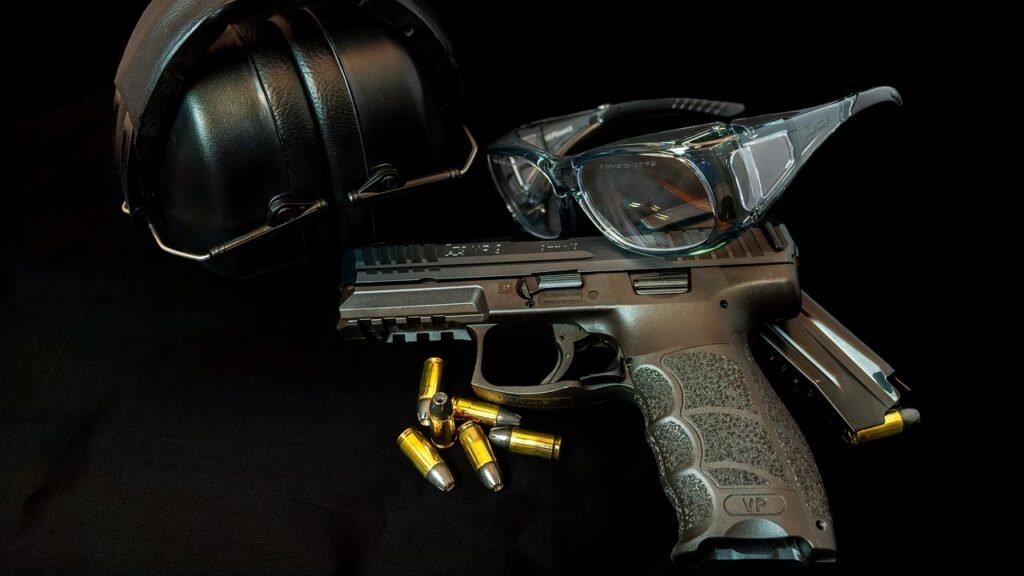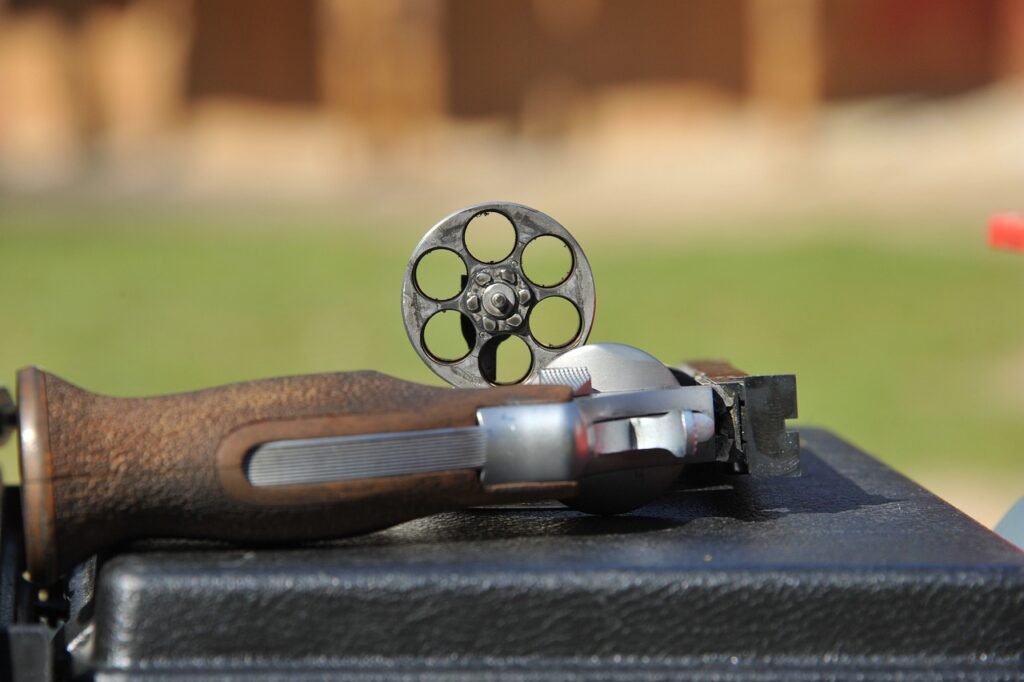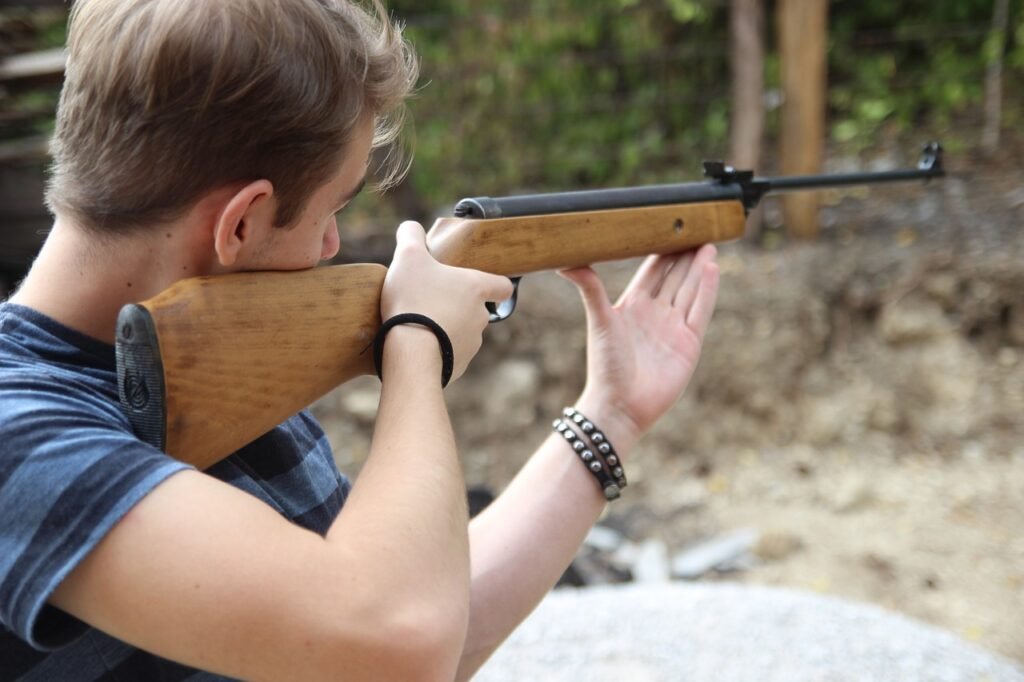If you’re an avid shooter or a beginner looking to improve your marksmanship, the choice between indoor and outdoor gun ranges can feel overwhelming. Both options offer unique advantages and considerations that can impact your shooting experience. Indoor ranges, with their controlled environment, provide a convenient and comfortable setting for practice, while outdoor ranges offer the freedom of shooting in open air and greater versatility. In this article, we’ll explore the key factors to help you make an informed decision on whether to head indoors or embrace the great outdoors for your next shooting session.
Cost
Indoor Range Costs
Indoor ranges typically have higher operating costs due to the need for extensive ventilation systems, while also providing a controlled and climate-controlled environment. As a result, the cost of using an indoor range tends to be higher when compared to outdoor ranges. Indoor ranges often require customers to pay a fixed fee per hour or per session, which can vary depending on the location and the specific range.
Outdoor Range Costs
On the other hand, outdoor ranges generally have lower operating costs as they do not require extensive ventilation systems or climate control. This often translates to lower costs for customers as well. Many outdoor ranges charge a flat daily fee or have annual membership options that provide unlimited access for a set price. Overall, outdoor ranges tend to offer a more cost-effective option for frequent and long-duration shooting sessions.
Convenience
Location
The location of a gun range can significantly impact convenience factors, especially for those living in urban areas with limited access to open spaces. Indoor ranges are typically found in more urban settings, making them more accessible to shooters who live or work in cities. On the other hand, outdoor ranges are commonly located in less densely populated areas, requiring shooters to travel further for their shooting sessions.
Operating Hours
Indoor ranges often have longer operating hours compared to outdoor ranges, which may be subject to daylight and weather conditions. Many indoor ranges operate throughout the day and even into the late evening, accommodating shooters with various schedules. Outdoor ranges, however, may have more limited operating hours, particularly during the winter months or adverse weather conditions, which can impact the convenience of accessing the range.
Membership
Both indoor and outdoor ranges often offer membership options, providing additional conveniences such as priority lane access, discounts on range fees, and even exclusive events or training opportunities. Membership can be particularly beneficial for frequent shooters, as it may help offset the costs and offer perks that enhance the overall shooting experience. Additionally, some ranges offer dual memberships that give access to both indoor and outdoor facilities, providing shooters with maximum flexibility and convenience.

This image is property of pixabay.com.
Safety
Environmental Factors
Indoor ranges provide a controlled environment that eliminates external factors such as wind, rain, or extreme temperatures, ensuring a consistent shooting experience. This controlled environment contributes to enhanced safety by reducing the risk of environmental disturbances affecting the trajectory of bullets. Outdoor ranges, on the other hand, are subject to weather conditions, which can introduce additional challenges and safety concerns, particularly during strong winds or heavy rain.
Ceiling and Backstop
The construction of the shooting range is crucial for safety. Indoor ranges typically have robust ceilings and backstops designed to contain and trap bullets, minimizing the risk of ricochets and stray bullets. These safety features provide reassurance for shooters, especially beginners who may require additional protection. Outdoor ranges also have adequate backstop systems, but the open-air nature of the environment may require extra vigilance and adherence to range rules to prevent accidents.
Ventilation
Indoor ranges are equipped with specialized ventilation systems that continuously draw and filter the air, effectively removing lead particles and hazardous gases from the shooting area. This ventilation system helps maintain a clean and safe environment for shooters, protecting them from potential health risks associated with lead exposure. Outdoor ranges, meanwhile, rely on natural ventilation, which may not provide the same level of air filtration and particle control as indoor ranges. However, the open-air setting of outdoor ranges offers natural air circulation, reducing potential exposure to lead and other contaminants.
Accessibility
Transportation
When considering accessibility, transportation plays a vital role. Indoor ranges often benefit from their urban locations, with easy access to public transportation options, such as buses or trains. This makes it more convenient for shooters without personal vehicles to reach the range. Outdoor ranges, typically located in more remote areas, may require shooters to have access to a private vehicle for transportation, which can be a limiting factor for some individuals.
Parking
Parking availability can greatly influence the accessibility of a gun range. Indoor ranges are often situated in urban areas, where parking can be limited and sometimes come at an additional cost. Shooters may need to find street parking or utilize nearby parking garages, which can increase the overall cost and require additional planning. On the other hand, outdoor ranges generally offer ample parking spaces, allowing shooters to park their vehicles conveniently close to the shooting area.

This image is property of pixabay.com.
Amenities
Target Retrieval System
Indoor ranges commonly feature automated target retrieval systems, allowing shooters to easily position and retrieve their targets without the need for manual adjustments. These systems offer a more efficient and streamlined shooting experience, especially when practicing drills or engaging in timed shooting exercises. Outdoor ranges may have more basic target setups, often relying on manual adjustments or designated shooting distances, which can be less convenient and time-consuming for shooters.
Shooting Stall Setup
Indoor ranges typically have individual shooting stalls or bays with dividers, providing shooters with their own dedicated space and added privacy. This setup not only enhances safety by preventing crossfire but also ensures a more comfortable and focused shooting environment, where shooters can concentrate on their technique without distractions. Outdoor ranges, in contrast, often offer a more open layout without individual stalls, which may result in a less private and more communal shooting experience.
Facility Maintenance
Indoor ranges generally prioritize regular facility maintenance to ensure a clean and well-maintained shooting environment. This includes regular cleaning, upkeep of shooting booths, target systems, and ventilation infrastructure. Shooters can expect a professional and well-organized facility when visiting an indoor range. Outdoor ranges, although they may also maintain their premises, are more exposed to natural elements and may require additional attention to ensure a safe and pleasant shooting experience.
Variety of Shooting
Distance Options
Indoor ranges typically provide limited shooting distances due to space constraints. These ranges often offer options for shorter distances, such as 25 or 50 yards. While this may be sufficient for most recreational shooting and handgun training, it may not accommodate shooters looking to practice long-range marksmanship. Outdoor ranges, with their larger footprint, can accommodate a wider range of shooting distances, allowing shooters to practice long-range shooting and precision accuracy.
Target Options
Indoor ranges usually offer a variety of target options, including paper targets, steel targets, and even interactive targets. This variety allows shooters to customize their training sessions and practice different shooting skills. Outdoor ranges often provide similar target options, with the additional advantage of being able to set up more dynamic and realistic scenarios, such as moving targets or shooting from different positions. The flexibility of target setups in outdoor ranges can contribute to a more engaging and challenging shooting experience.
Training Opportunities
Indoor ranges often provide a range of training opportunities, including instruction from certified instructors, defensive shooting classes, and specialized training programs. These training options can benefit both beginners looking to gain knowledge and skills and experienced shooters seeking to further enhance their abilities. Outdoor ranges may also offer training courses, albeit with a focus on marksmanship and shooting fundamentals. However, the variety and availability of training programs may vary depending on the specific outdoor range and its offerings.

This image is property of pixabay.com.
Weather Impact
Indoor Range Advantage
Indoor ranges have a significant advantage when it comes to weather conditions. Shooters can enjoy shooting sessions regardless of rain, snow, extreme heat, or cold temperatures, as the controlled indoor environment shields them from outdoor elements. This eliminates the worry of weather-related cancellations or the need to adjust shooting plans based on external conditions. The ability to shoot in a comfortable and consistent environment makes indoor ranges a preferred option for those who value year-round shooting.
Outdoor Range Advantage
While indoor ranges provide a climate-controlled environment, shooting outdoors offers a different experience and presents unique advantages. Outdoor ranges allow shooters to practice in real-world conditions, adapting to factors such as wind speed, lighting conditions, and varying temperatures. This exposure to outdoor elements can help shooters develop adaptability and improve their shooting skills in unpredictable situations. Additionally, shooting outdoors provides an opportunity to connect with nature, offering a refreshing change of scenery and a sense of freedom.
Noise Level
Indoor Range Noise
Indoor ranges typically have better noise containment due to their enclosed structures, sound-dampening materials, and ventilation systems designed to minimize noise transmission. These features contribute to a quieter shooting environment, reducing the risk of hearing damage or discomfort for shooters and nearby individuals. However, it is important to note that despite noise reduction efforts, shooting at an indoor range still generates significant noise, and hearing protection should always be worn.
Outdoor Range Noise
Outdoor ranges, being open-air, allow sound to disperse more freely. Although outdoor ranges may have designated shooting areas and safety berms to reduce noise pollution, the sound produced by firearms can carry over longer distances. Shooters at outdoor ranges and the surrounding community are likely to hear more substantial noise levels compared to indoor ranges. Adhering to range rules and etiquette, such as using suppressors or muzzle devices designed to mitigate noise, can help mitigate the impact on noise levels for outdoor ranges.
Social Aspect
Indoor Range Community
Indoor ranges often cultivate a vibrant and active community of shooters. These ranges frequently host competitions, leagues, and social events that provide opportunities for shooters to connect with like-minded individuals who share a passion for firearms. The indoor range community can be a source of camaraderie, friendly competition, and the exchange of knowledge and experiences among shooters from various backgrounds and skill levels.
Outdoor Range Community
Outdoor ranges also foster a sense of community among shooters, albeit in a different setting. The nature-centric environment of outdoor ranges brings shooters together who appreciate the outdoors and enjoy outdoor activities beyond shooting. Outdoor range communities often organize social gatherings, hunting trips, or camping trips, allowing shooters to bond over shared experiences and forge friendships beyond the shooting range.
Personal Preference
Experience and Preference
Ultimately, the choice between an indoor or outdoor range comes down to personal preference and the shooting experience one seeks. Some shooters prefer the controlled environment of an indoor range, appreciating the consistent conditions, convenience, and the amenities provided. Others may prefer the challenges and natural elements encountered at an outdoor range, valuing the variety of shooting distances, target setups, and the connection with nature.
Psychological Factors
Psychological factors can also influence the choice between indoor and outdoor ranges. Some shooters may feel more comfortable and relaxed in a controlled indoor setting, particularly if they are new to shooting or easily distracted by external factors. On the other hand, outdoor ranges can offer a sense of adventure and excitement, providing shooters with a unique and dynamic shooting experience that can boost adrenaline and test mental focus.
Individual Requirements
Individual requirements, such as specific training needs or goals, can impact the choice between indoor and outdoor ranges. Shooters seeking specialized training programs, defensive shooting courses, or access to competitive shooting events may find more tailored options at indoor ranges. Conversely, those pursuing long-range marksmanship or tactical shooting training may find outdoor ranges better suited to their needs. Considering one’s individual requirements and shooting goals can help narrow down the range options and ensure a more fulfilling shooting experience.
